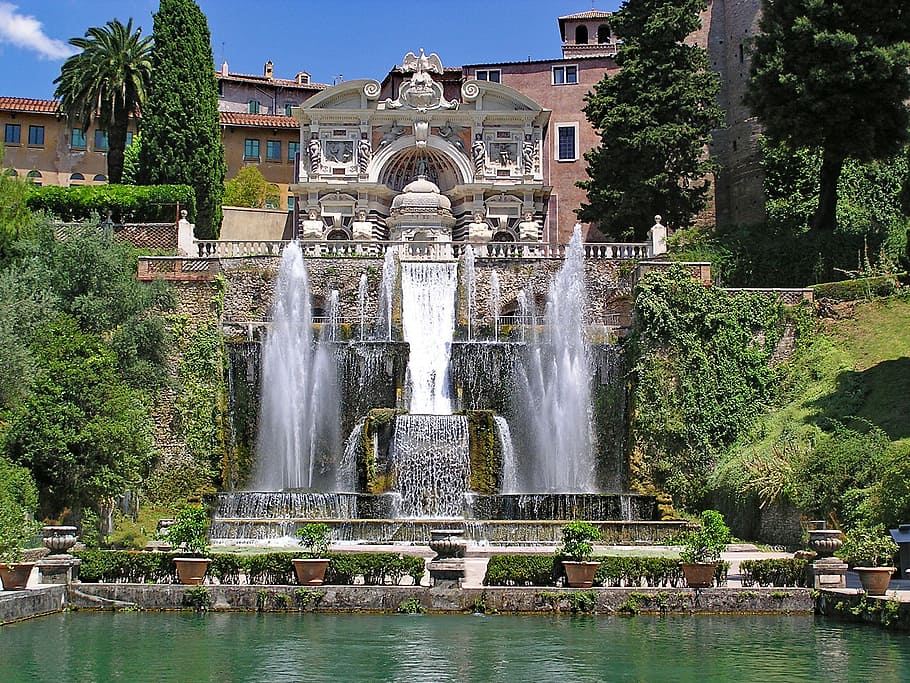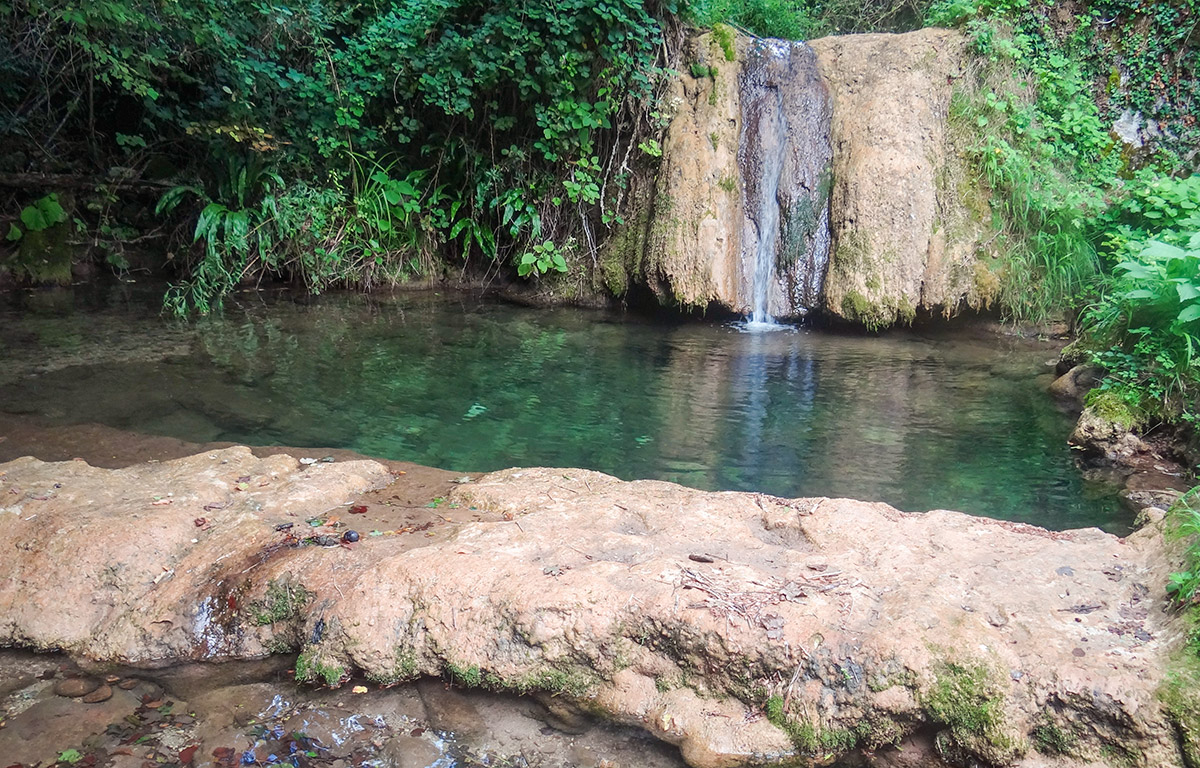45 minutes
From Orvinio you need to go to Licenza and to Vicovaro to get to the mainroute A24 towards Tivoli.
Villa d'Este
The villa was declared a UNESCO World Heritage Site in 2001 and represents a unique example of an Italian garden. The building was designed by the architect Pirro Logorio who began the works in 1550 on commission from Cardinal Ippolito II d'Este, son of Lucrezia Borgia. The cardinal, frustrated because he had not been elected pope, wanted to build this palace to relive the glories of the courts of Ferrara, Rome and Fointanebleau and to see the magnificence of the ancient Roman Villa Adriana reborn.
As soon as you enter the building, you come to a staircase that leads to the reception hall. From here you reach the Noble Apartment famous for its late Roman Mannerist frescoes.
The villa is characterized by a beautiful garden full of fountains that create water theatres. Note the Fontana del Bicchierone - by Gian Lorenzo Bernini - the Fountain of the Birds, the Fountain of the Organ, the nymphaeums, the caves, the water games and the so-called "musical fountains" which enhance the harmonies of the water for create music games.
The Villa was almost completed when Ippolito d'Este died in 1572. After other interventions in the 17th century, a period of decline followed. It was Cardinal Gustav Adolf von Hohenlohe who revived it by hosting artists such as the musician Ferenc Liszt (1811-1886).
Acquired by the Italian State, the Villa was restored and opened to the public between the 1920s and 1930s.
For more information on tours telephone: +39 0774 332920 and visit website: https://www.visittivoli.eu/le-ville/villa-d-este&lang=IT
Villa Adriana
It is 11 minutes from Villa d'Este
Villa Adriana was the suburban residence of the Emperor Hadrian. It took about twenty years to build it: between 118 and 138 AD.
The emperor chose this location for his villa due to the abundance of water and its proximity to Rome (only 28 km).
The Villa is considered the queen of the imperial villas of ancient Rome for the imposing grandeur of the architecture, it represented a real city, spread over an area of about 120 hectares. It consists of a complex of classical buildings combining Egyptian, Greek and Roman architectural elements. In addition to the imperial palace, there were temples, libraries, theatres, baths, nymphaeums, the odeon, the arena, the academy and then parks, warehouses and accommodation for servants and garrisons.
In the Renaissance, Hadrian's villa represented an example of classical inspiration for the use of statues and water features.
Free admission on the first Sunday of the month. For more information: https://www.unesco.it/it/PatrimonioMondiale/Detail/132
Park of Villa Gregoriana
Villa Gregoriana in Tivoli allows you to take a walk of about a couple of hours through woods, paths, steps in the rock, waterfalls and the remains of the Villa of the Roman consul Manlio Vopisco, but also the Roman temples including the celebrated one of Vesta.
The park is the result of a hydraulic engineering project commissioned in 1832 by Pope Gregory XVI to contain the continuous flooding of the Aniene, channeling its waters into a double tunnel dug into Mount Catillo and then artificially increasing them, thus giving life to the 120-metre drop of the new Cascata Grande, which is the second highest in Italy after the Marmore.
The park suffered degradation and in 2005 it was reopened to the public thanks to the FAI. and today you can again walk the ancient paths freed from brambles.
Hours 10-18.30
For information, telephone 0774-332650 and website: https://fondoambiente.it/luoghi/parco-villa-gregoriana



_1000_03.jpg/1200px-Villa_Hadriana_(Villa_Adriana_Tivoli)_1000_03.jpg?20210915140748)




.jpg)
.jpg)










